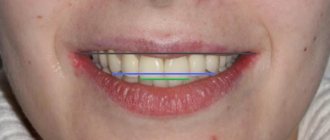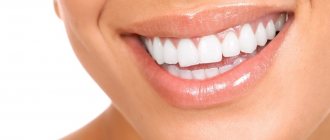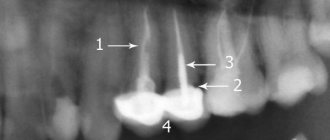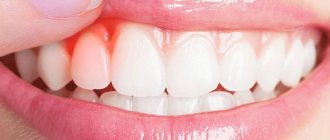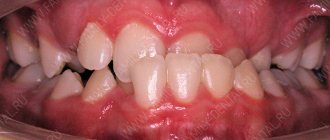How do you know if your smile is beautiful and natural?
It is easy to distinguish a natural smile from a forced one if a person has not worked on his facial muscles and has not practiced smiling in front of a mirror. Each of us has at least once encountered a situation when there is no reason to smile, but it is worth smiling out of politeness. To understand whether your smiling face looks open, you need to turn to your thoughts: if you are gloomy at heart, it is unlikely that the joy on your face will not be strained. For a smile to be charming and open, you need to think about the things that cause it in a normal situation, and if you do this often, a natural smile will become a habit, and pleasant thoughts will improve your mood.
A smile will brighten the day
The more often you smile, the easier it becomes to do so. After all, the main secret to a good smile is regular practice.
We hope residents of foreign countries will be able to achieve this skill. If a person does not smile there, others perceive him as an ill-mannered rude person.
In addition, “on duty” smiles also benefit the facial muscles, making them more mobile.
If you smile forcedly, do not be surprised at the result, which will clearly be disappointing. Correct facial expressions require constant training.
Causes of anomalies
Let's look at the main reasons why defects occur:
- Genetic factor. Mesial and distal occlusion are most often inherited. For parents, knowing about the high risk of such a defect occurring in their child, it is easier to control treatment in childhood, during the formation of the maxillofacial system.
- Developmental anomalies in the prenatal period. Various pregnancy pathologies can often affect the formation of the fetal dental system.
- Birth injury. Mesial occlusion is caused by displacement or dislocation of the baby's lower jaw during difficult childbirth.
- “Wrong” habits in childhood. These include constant pacifier or finger sucking, improper nipple latching, and improper sucking during bottle feeding. If the hole in the nipple is too large, the child’s lower jaw practically does not work when sucking and remains undeveloped.
- Frequent sinusitis and rhinitis, due to which the child constantly breathes through his mouth. With such breathing, the development of facial bones is disrupted.
- Violation of tooth change. Early removal of baby teeth often causes abnormal maxillofacial development.
- Incorrect prosthetics, lack of prosthetics.
- Hypertonicity of the masticatory muscles due to stress provokes abrasion of the incisors and displacement of the jaws.
- Various injuries of the maxillofacial area.
How you can learn to smile beautifully depending on your face type
Any expression of emotion changes the face in the same way as successful makeup or the right wardrobe. Therefore, it is worth taking this issue seriously, especially in business relationships.
If you have a long face, pay special attention to the vertical aspect of your teeth . Try not to smile too widely - others may perceive this as aggression.
On the contrary, a wide smile suits people with a square or round face.
With its help, the outlines visually become more oval and “correct”. An “on duty” smile (with the mouth closed) will be perceived by people with this type of face as excessive modesty.
But people with the correct oval are lucky in this regard - both the “on duty” smile with the mouth closed and the wide Hollywood one will be perceived equally well by others.
Why can't people smile?
Maria Yakovleva, orthodontist:
I often ask myself the question: “Why don’t people know how to smile”? And I answer: “Because they are shy.” They are embarrassed by an ugly smile, they are embarrassed by crooked teeth, they don’t like something about themselves, it all comes from people’s internal complexes.
When patients come to see me for the first time, I immediately determine that their smile can be much better.
This is already the so-called “professional deformation” (in the good sense of the word) of the brain, when, starting from the threshold of the door, when they walk in, patients greet you, or when I greet a person, I smile a little, because this is a gesture of greeting. And I, as an orthodontist, already know: “Yeah, I see, he’s probably worried about this and that.”
What is a smile from a physiological point of view?
These are contractions of the facial muscles, in particular the cheeks, lips and eyes, and when you smile, the number of muscles involved is less than when you frown. A smile expresses a good mood, pleasure, an ironic state, fun, and also a greeting. Have you noticed that it is difficult for you not to start smiling when you notice that a friend is coming towards you? :) Also, a smile is the best way to fill an awkward pause in a conversation or avoid answering a stupid question.
So a smile is a multifunctional facial and social tool, and every social person should learn to smile beautifully. Usually this is developed naturally, but we are ready to give you some practical tips that really work.
Example 4. The path to a man’s smile is not easy to find.
And here is a young man
In the “before” photo (when he arrived) - it was a constrained smile, we could barely force him to smile - just look - his smile is strained.
There are such patients when you look for a way to their heart for quite a long time and not easily, because they are secretive people. But at the moment the orthodontic equipment was removed, something happened that can be called “the man revealed himself.” It was the revelation, because the smile finally shone, we finally achieved what we wanted. And everything worked out for us.
How to smile beautifully in a photo
It's hard to get a good shot if you're in a bad mood. While posing in front of the camera, remember a funny incident. Your eyes will immediately sparkle and transform beautifully.
Read also: what turns guys on in bed?
Before taking a photo, practice in front of a mirror.
Rules for beautiful photography:
- Never say “cheese”, rather say “panda”.
- Smile with your eyes, just remember something funny or the face of a loved one.
- Open your mouth slightly. Don't show all your teeth, just a little bit.
- Do not take photos strictly from the front, so as not to end up with a flat face in the photo. Turn your face slightly to the side.
- Do not lower your face down so that your chin does not become massive.
- Choose a lipstick that will make your teeth appear much whiter.
- Moisturize your lips with Vaseline or glitter.
- Smile in the mirror first, then take pictures.
- Before shooting, moisten your teeth and run your tongue over them.
- Take the tension off your face and don’t think about how you’ll turn out in the photo.
The thinnest plates: veneers and lumineers
If, in addition to the color of your teeth, you are not satisfied with their shape, restoration of the front teeth or a veneering procedure will help you.
Dentists have both therapeutic and orthopedic veneers in their arsenal. Therapeutic ones are more affordable, but also less durable: they can change color or chip over time. They are made from a composite material directly on the patient’s teeth and require extensive experience and skill of the doctor. In contrast, orthopedic porcelain veneers are made in a special laboratory and can last a lifetime. Different clinical cases require different degrees of grinding of the teeth, and by installing lumineers on the teeth, you can do without grinding and get a high aesthetic result.
Photos before and after installation of veneers at the SDent clinic by orthopedist I.V. Mamedov
Exercises for a beautiful smile
Yes! And you can train your smile too! After all, muscles also work here, the same red fibers that make the cubes on your stomach, biceps, triceps, and so on.
These exercises must be done systematically to get good results:
- In front of the mirror, determine which facial expression gives you the most beautiful smile. Hold it for 10 seconds, then relax your face. Return to the smiling expression for another 10 seconds, then relax. Do this 7-10 times.
- Purse your lips tightly, then stretch them forward, as if you decided to express everything to a nasty person from the distant past. Do this up to 15 times. Here we are working on lip flexibility.
- Take in as much air as your lungs can, exhale gradually through tightly compressed lips. Repeat 20 times. Here we work on the flexibility and symmetry of the lips.
- If the bottom row of teeth is a little weak, try to hide them a little behind a happy smile. Smile “from ear to ear”, then return your lips to the ideal position and hold. Relax your face, then repeat the same thing again. Here we are working on the topic of how to make your smile wider.
- Close your lips tightly, stretch them forward, and try to draw the number “eight” in the air with your lips. Then relax. Repeat up to 5 times.
- Smile really, really hard. Then relax. Repeat this 10 times.
You will definitely succeed and in the photo your smile will shine with new colors!
